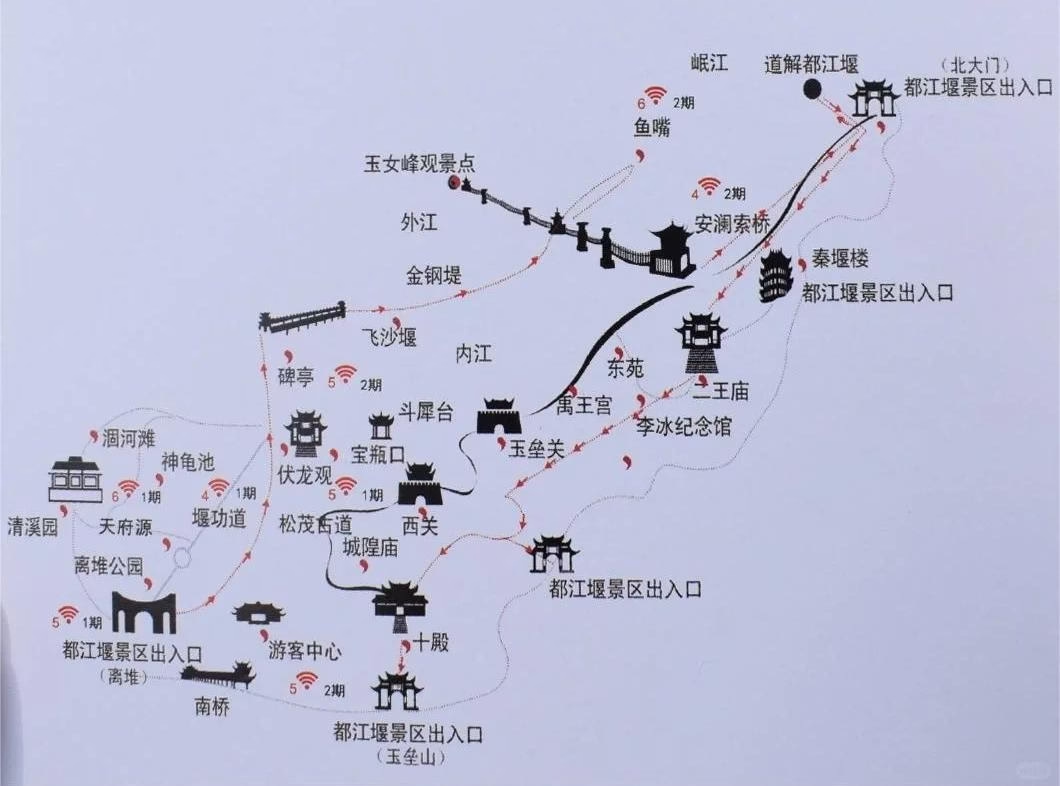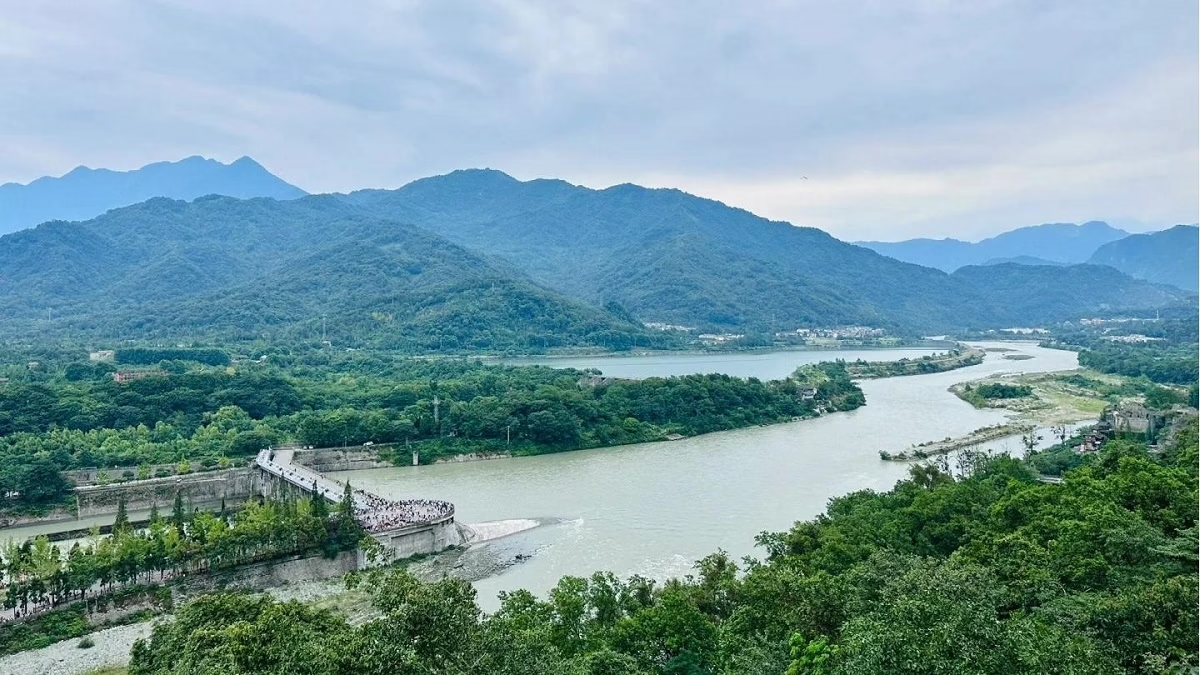If you’re planning to visit the Dujiangyan Scenic Area but worry about entering the wrong gate or missing out on the attractions you’re most excited to see, this guide is here to help! Dujiangyan has seven main entrances, each leading to different parts of the scenic area. This guide will walk you through each entrance, its key attractions, and the best routes to take so you can make the most of your visit.

Li Dui Park Main Gate (离堆公园大门)
This is the main entrance (also known as South Gate or Gate 1) and the most popular entry point for visitors. Many tour groups from outside of Chengdu use this gate. From here, you can visit Yan Gong Avenue (堰功大道), Fulong Temple (伏龙观), and the Baopingkou (宝瓶口). The transportation options here are convenient, with the Chengdu-Dujiangyan High-Speed Rail stopping at Li Dui Park Station (离堆公园站), just a 50-meter walk to the gate.
West Street Entrance (西街入口)
Also known as Gate 2, this entrance is suitable for visitors with more time and stamina. After entering, you’ll find yourself on a mountain path, leading to attractions like the Ten Halls (十殿), City God Temple (城隍庙), Xiguan (西关), and Yulei Pass (玉垒关). The walk here involves more uphill sections, so it’s best for those who are physically prepared for a longer hike.
Yulei Mountain Park Main Gate (玉垒山公园大门)
Known as Gate 3, this entrance is located at the end of Happiness Road (幸福路) in the ancient city. Entering through here, you’ll first visit the City God Temple, and after walking 500 meters uphill, you can reach the top of Yulei Mountain (玉垒山) for panoramic views of Dujiangyan and Zipingpu Reservoir (紫坪铺水库). At the summit, you can also visit the Yulei Pavilion (玉垒阁) and take the elevator to Erwang Temple (二王庙).
Li Bing Memorial Hall Entrance (李冰纪念馆入口)
This is Gate 4, and it leads directly to the Li Bing Memorial Hall (李冰纪念馆), where you can learn about the history of the Dujiangyan Irrigation System and the efforts of Li Bing and his son in water management. This is a great stop for those interested in the history and engineering behind the irrigation system.
Erwang Temple Back Gate (二王庙后门)
Also known as Gate 5, this entrance is the most convenient for those who want to prioritize visiting Erwang Temple. After entering, you can explore the temple dedicated to Li Bing and his son, then continue along the Songmao Ancient Path (松茂古道) to see other nearby attractions. Public buses can take you directly here from the city center.
Qin Yan Lou Back Gate (秦堰楼后门)
This is Gate 6, where you can access the Qin Yan Lou (秦堰楼), a high observation tower that offers stunning views of the Dujiangyan Irrigation System, the Min River (岷江), and the surrounding mountains. From here, you can continue to visit Erwang Temple, Anlan Suspension Bridge (安澜索桥), and other scenic spots. This route is more relaxed as it’s all downhill, making it a great option for families with children or elderly visitors.
North Gate (北大门)
Known as Gate 7, this entrance is located 200 meters north of the Anlan Suspension Bridge (安澜索桥), after crossing the Yuzui (鱼嘴) area. It’s less crowded than the other entrances and offers a quieter route to explore the scenic area.

